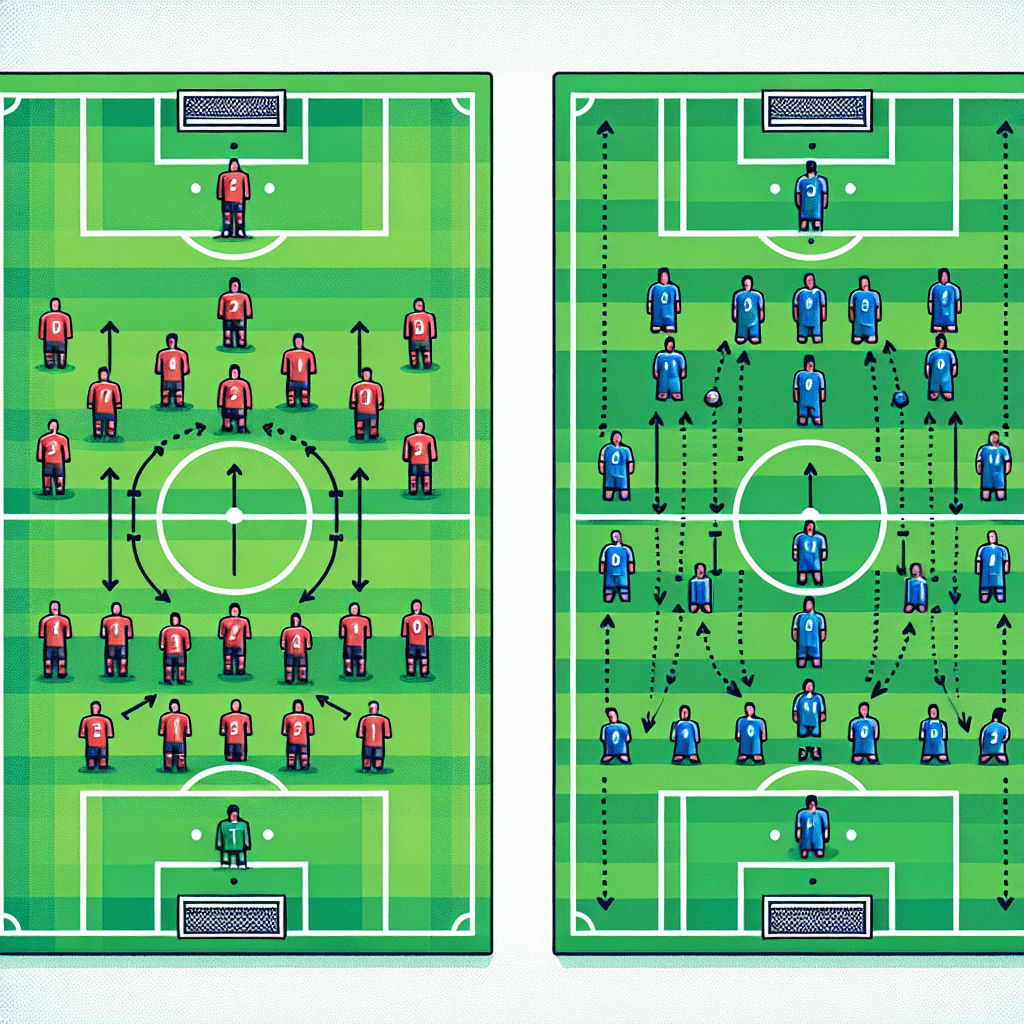[ad_1]
From 4-4-2 to 3-5-2: The Evolution of Tactical Formations in Modern Soccer
Introduction:
The landscape of modern soccer is one of constant evolution, with tactical formations lying at the core of this transformation. Over the decades, we have witnessed a shift from the once-dominant 4-4-2 formation to the increasingly popular 3-5-2 setup. This transition highlights not just a change in numbers but a fundamental shift in the philosophy of play, role definitions, and strategic priorities on the pitch. In this deep dive, we’ll explore the roots of the 4-4-2, its evolution into the 3-5-2 formation, and how these changes reflect broader trends in modern soccer.
The Dominance of 4-4-2:
The 4-4-2 formation has its origins in the English game, rising to global prominence in the 1960s and 70s. It features four defenders (two center-backs and two full-backs), four midfielders (two centrals, a left, and a right winger), and two strikers. This structure provided a balance between defense and attack, with clear roles and responsibilities for each player. The formation emphasised width, traditional wing play, and direct football, relying on crosses into the box for goal-scoring opportunities. Teams like Manchester United under Sir Alex Ferguson and Arsenal under Arsene Wenger achieved monumental success with this setup, cementing the 4-4-2’s legacy in soccer history.
Transition Turbulence:
The transition from 4-4-2 to more fluid formations began as teams sought ways to dominate possession and control the midfield. The introduction of the ‘Makelele role’, a defensive midfielder dedicated to breaking up opposition attacks, pointed towards the limitations of the 4-4-2 in controlling the game’s tempo. As soccer strategy evolved, it became imperative to have flexibility and greater numbers in the middle of the park, leading to innovations in formation design.
Birth of 3-5-2:
The 3-5-2 formation, while not entirely new, gained substantial popularity as a counter to the limitations of its predecessors. It consists of three defenders (usually a central trio), five midfielders (two wing-backs, two central midfielders, and one attacking midfielder), and two strikers. This setup offers numerous tactical advantages: a solid backline with the flexibility of an additional central defender, wing-backs providing width and defensive reliability, and a packed midfield for control and creativity. Notable successes include Antonio Conte’s Chelsea and Juventus sides, which utilised the formation to great effect, showcasing its versatility and strategic depth.
Strategic Evolution:
The shift from 4-4-2 to 3-5-2 mirrors a broader tactical evolution towards more possession-based, versatile, and dynamic play. In the 3-5-2, the central midfielders are crucial for dictating the tempo of the game, offering defensive support, and initiating attacks. Moreover, the role of wing-backs has become increasingly important, providing both width in attack and additional support in defense. This formation also allows for fluid transitions between defense and attack, with teams able to adapt their shape dynamically during the game.
Philosophical Shift:
At its core, the evolution from 4-4-2 to 3-5-2 signifies a philosophical shift in modern soccer. The emphasis has moved from the rigid roles and direct play of the past to a more fluid, interconnected, and versatile approach. Today’s game demands players be tactically astute, technically proficient, and physically adaptable, able to perform multiple roles on the pitch. Teams strive for strategic superiority, with a focus on controlling the midfield, dominating possession, and pressing high up the pitch to disrupt opponents. This modern outlook reflects a more holistic understanding of the game, where every player is involved in both defense and attack.
Impact on Players and Teams:
The tactical evolution from 4-4-2 to 3-5-2 has profound implications for player development and team strategy. Players are now required to have a broader skill set, with defenders needing to be comfortable with the ball and attackers required to press and contribute defensively. This shift underscores the importance of tactical flexibility, mental agility, and technical ability in modern soccer.
Looking Ahead:
The future of tactical formations in soccer promises further innovation and evolution. As data analytics and performance insights become increasingly sophisticated, we are likely to see new formations and strategies emerging. However, the principles underpinning the shift from 4-4-2 to 3-5-2 – flexibility, control, and dynamism – will continue to influence tactical thought in the years ahead.
FAQs:
Q: Why has the 4-4-2 formation become less popular in modern soccer?
A: The 4-4-2 formation has become less popular primarily due to its limitations in controlling the midfield and its rigid structure, which does not adapt well to the dynamic, possession-based style of modern soccer.
Q: What are the key benefits of the 3-5-2 formation?
A: The key benefits include greater control of the midfield, flexibility in defense and attack, and the strategic advantage of having wing-backs that contribute on both ends of the pitch.
Q: Can the 3-5-2 formation be defensively vulnerable?
A: Like any formation, the 3-5-2 has its weaknesses, including potential exposure on the flanks if the wing-backs are caught too far forward. However, with disciplined players and proper coordination, these vulnerabilities can be mitigated.
Q: Have any teams won major trophies with the 3-5-2 formation?
A: Yes, several teams have achieved significant success using the 3-5-2 formation, including Chelsea’s Premier League win under Antonio Conte and Juventus’s multiple Serie A titles, also under Conte and later Massimiliano Allegri.
Q: Is the 3-5-2 formation the ultimate tactical setup in soccer?
A: No formation can be deemed the ultimate setup as soccer is constantly evolving, and success depends on numerous factors including the players’ skills, the manager’s philosophy, and the opposition’s tactics. The 3-5-2 is merely one approach among many in the rich tactical tapestry of the game.
Conclusion:
The evolution from 4-4-2 to 3-5-2 in modern soccer is a testament to the game’s ever-changing nature. It reflects a move towards more nuanced, fluid, and versatile approaches to playing and thinking about the game. As soccer continues to evolve, so too will its tactics, ensuring the beautiful game remains as engaging and unpredictable as ever.
[ad_2]






